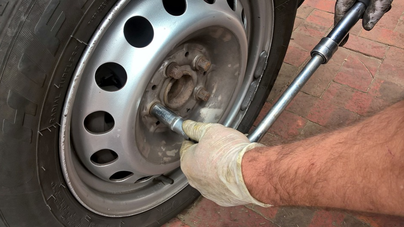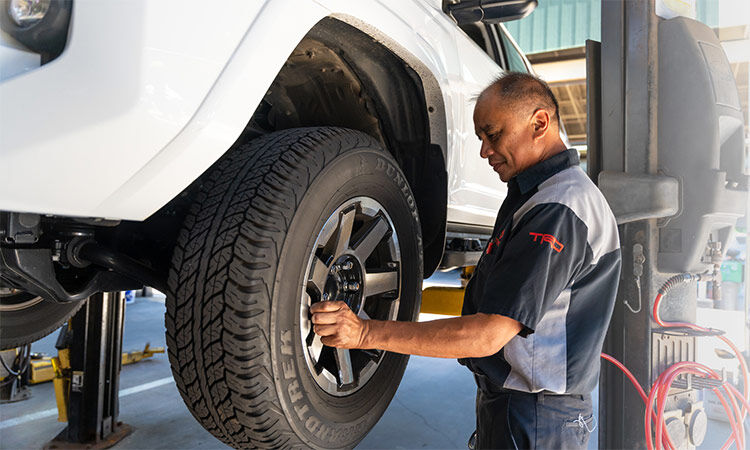Drive with Confidence: GMC Tires Service at Morris Tires
Tire Solution: The Effect of Climate Problems
When it involves guaranteeing optimal efficiency and safety and security when driving, recognizing the impact of climate problems on tire service is critical. From scorching warmth to icy roads, each climate element can significantly affect tire performance and overall driving experience. By diving right into the results of varying climate condition on tires, chauffeurs can get important understandings that might enhance their lorry's performance and durability. In this conversation, we will check out the detailed partnership in between climate condition and tire service, dropping light on the relevance of weather-specific tire maintenance practices and considerations.
Warmth and Tire Efficiency
When revealed to high temperatures, tires experience modifications in performance that can significantly impact vehicle security and handling. The heat produced from long term driving or hot climate conditions creates the tire rubber to soften, leading to reduced walk life and boosted wear.

Cold Weather Condition Impacts
Cold climate problems can have a substantial effect on tire efficiency and safety. In cold climate, tires might additionally lose air pressure much more swiftly, which can impact handling and fuel efficiency.
To minimize the effects of winter on tires, it is vital to on a regular basis check tire pressure and inflate them to the manufacturer's recommended degrees. Making use of winter months or all-season tires made for winter problems can also improve grip and grip on icy or snowy roadways. Correct tire upkeep, including regular inspections for wear and damage, comes to be a lot more crucial throughout chillier months to make certain optimal performance and safety.
Rainy Conditions Impact
During rainy conditions, tire efficiency and safety can be considerably affected by the wet roadway surfaces and reduced exposure. The walk pattern of tires plays a critical role in keeping traction on damp roadways. Tires with damaged footsteps are a lot more vulnerable to hydroplaning, where a layer of water builds up between the tire and the road surface, resulting in loss of grip. To combat this, vehicle drivers must routinely examine their tires for sufficient tread deepness and think about investing in tires specifically created for wet problems.
Furthermore, stormy weather can likewise lower presence, making it challenging for drivers to see the road in advance clearly (GMC Tire Service). check my source In such problems, it is crucial to readjust driving speeds appropriately and keep a risk-free complying with distance to permit for sudden stops. Appropriately inflated tires can also assist in keeping control on damp roads by giving far better handling and grasp
Snow and Tire Safety
When driving in snowy conditions, having the right tires can make a substantial distinction in security and efficiency. Winter months tires are made with special go to these guys rubber compounds and tread patterns to provide far better grip on snow and ice contrasted to all-season tires.

It is crucial to follow supplier directions when installing and making use of tire chains to protect against damage to the tires and vehicle. By choosing the ideal tires, maintaining correct rising cost of living, and taking into consideration added traction aids like tire chains, vehicle drivers can enhance their security when browsing snow-covered roadways.
Weather-Related Tire Maintenance
When confronted with numerous weather problems, appropriate tire upkeep ends up being an important aspect of automobile safety and security and efficiency. Weather-related tire maintenance incorporates an array of methods intended at making sure ideal tire function and longevity in various weather condition scenarios. One vital facet of weather-related tire upkeep is tire stress regulation. Changing temperatures can create tire stress to differ, impacting traction and fuel performance. Frequently inspecting and adjusting tire pressure according to maker suggestions is essential learn this here now for risk-free driving in altering weather. Furthermore, tire walk depth plays a substantial duty in dealing with various climate aspects. Tires with ample tread deepness offer far better hold on wet or icy roadways, reducing the risk of skidding or hydroplaning. Inspecting tire tread frequently and replacing tires when walk wear reaches a particular deepness is essential for maintaining traction and stability in negative climate. By focusing on weather-related tire maintenance, motorists can improve safety and security, boost vehicle efficiency, and lengthen the life-span of their tires.
Verdict
In final thought, weather problems have a substantial impact on tire efficiency and safety and security. From warmth influencing tire stress and put on to cold weather reducing grip, it is vital to take into consideration the climate when maintaining and using tires.
In this discussion, we will certainly check out the elaborate connection in between weather condition problems and tire solution, losing light on the importance of weather-specific tire maintenance methods and factors to consider.
